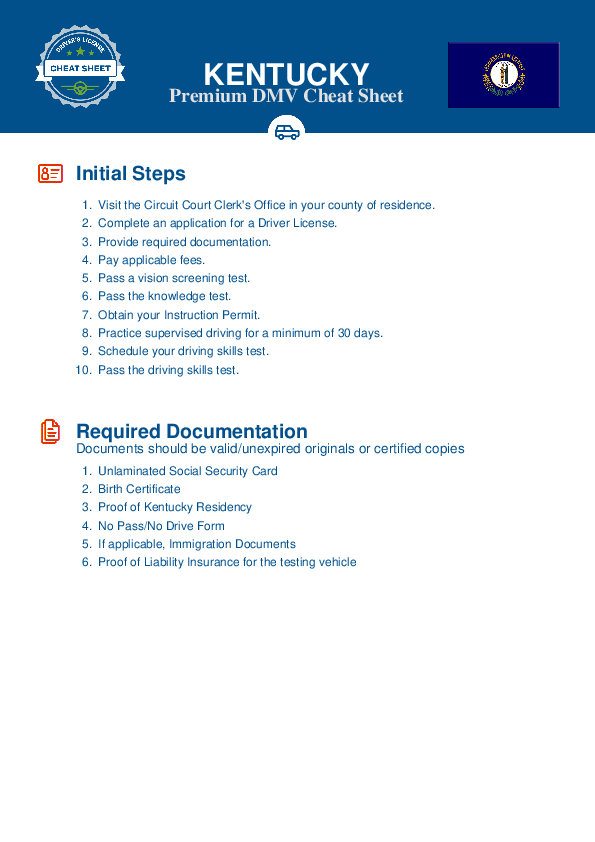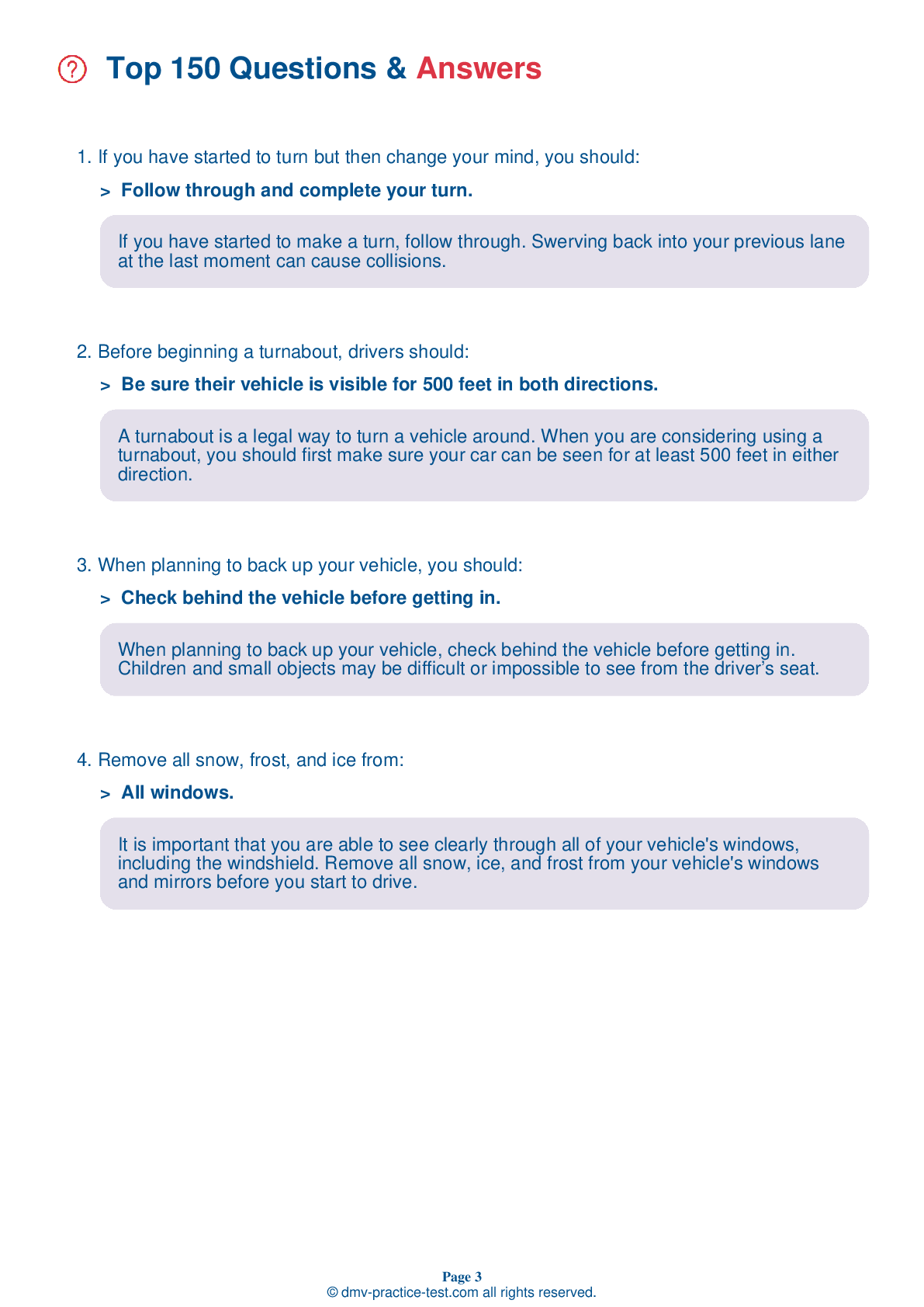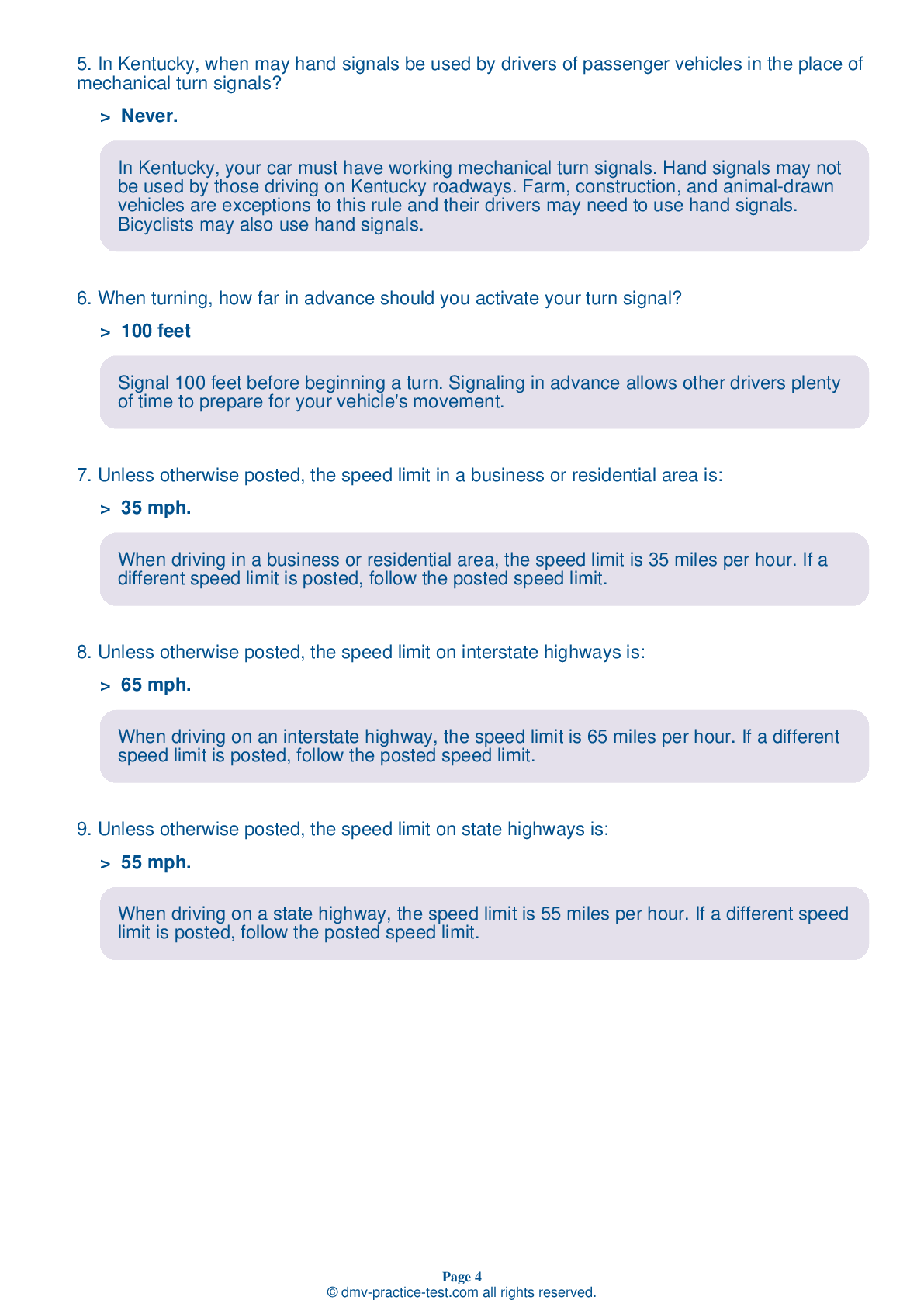FREE Kentucky DMV Practice Test #18 Page 5 of 5
The DMV practise tests in Kentucky have been updated for January 2026. It comprises questions based on the most important traffic signals and laws for 2026 from the KentuckyDriver Handbook. To study for the DMV driving permit test and driver's licence exam, use actual questions that are very similar (often identical!) to the DMV driving permit test and driver's licence exam.
Each question on the practise exam has a tip and explanation to help you recall the ideas. Questions about traffic rules, traffic signs, and driving statutes, as well as knowledge from the Driver Handbook, will be included in the written portion of the official Kentucky DMV test.
You must properly answer 32 of the 40 questions to receive a passing mark. To help you prepare for your Kentucky instruction permit or driver's licence, take our DMV practise test.
The DMV exam is offered in a variety of languages.
Using any form of testing help will result in an automatic fail, and the DMV may take further action against your driver's licence, so avoid it.
33 . When turning, how far in advance should you activate your turn signal?
Signal 100 feet before beginning a turn. Signaling in advance allows other drivers plenty of time to prepare for your vehicle's movement.
34 . You are approaching an intersection at the posted speed limit when the signal turns yellow. You should:
A solid yellow light means "caution" and signals that the light will soon turn red. You should stop at a solid yellow light if you can do so safely; otherwise, you should cautiously cross the intersection.
35 . Broken yellow lines are used on streets and highways to:
Yellow lines separate traffic moving in opposite directions. Dashed lines on the pavement indicate that passing is permitted when safe.
36 . What is an important step in turning?
When turning, you should look to the rear and both sides of your vehicle to ensure it is safe to proceed before making the turn. Adjust your speed to safely complete the turn.
37 . This sign means:





